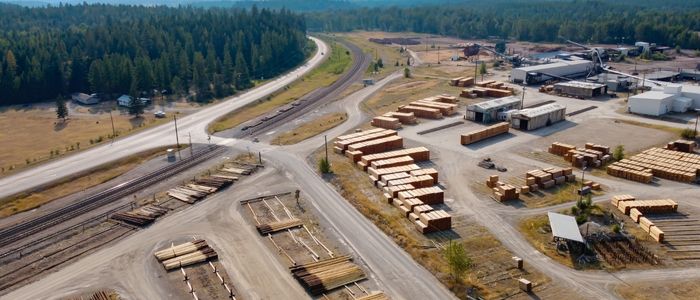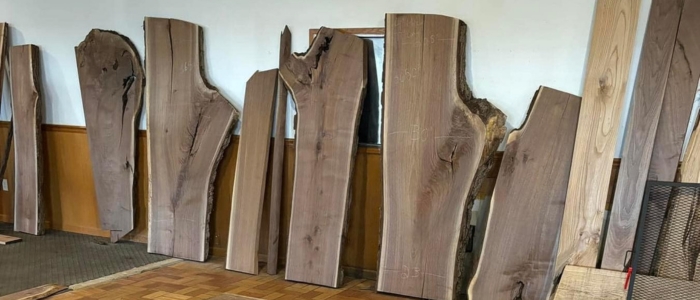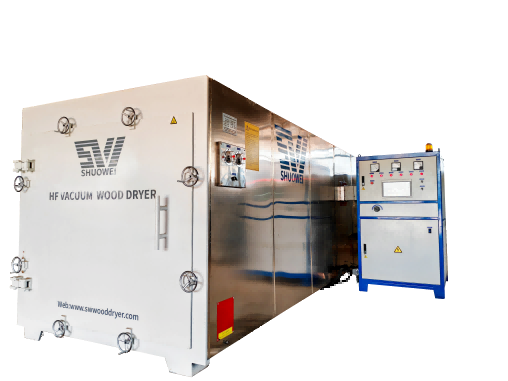Wood drying means to dry wood with a method, so after wood processing, what is its specific definition?
Definition of wood drying: It is forced to evaporate and dissipate the moisture of wood in natural and artificial ways, so that the moisture content of wood drops to meet the requirements of use. In this way, it avoids mycelial corrosion and wood splitting and deformation in the process of storage, transportation and use of wet wood, so as to improve the quality of wood products and extend their service life.
What are the methods of wood drying?
Simply speaking, there are mainly natural drying method and artificial drying method.
Natural drying method is a drying method using gas convection. The main methods of artificial drying are convection heating and medium heating. The former has kiln drying, solar drying, water drying liquid and centrifugal force drying; The latter has microwave drying, high frequency drying. There are radiation heating infrared drying method and contact heating drying method.

When wood is dried, the moisture evaporates from the wood surface first. The moisture content of the surface layer is lower than that of the interior of the wood, and the moisture content of the interior moves to the surface layer under the action of moisture content gradient.
The speed of drying initial stage depends on the speed of evaporation of moisture of wood surface layer, the meta phase of drying and later period, drying speed depends on the movement speed of moisture inside wood, become inversely proportional with plank thickness and wood specific gravity.
In addition, sapwood dries faster than heartwood. The string panel of broadleaf tree dries faster than the diameter panel.
However, there was no significant difference in chord diameter surface of conifers. Tree species have a great impact on drying: Wood that dries easily, like red pine, spruce, fir , red spruce, Masson’s pine, Chinese fir, pine, basswood, paulownia, Sassafras, etc.; Wood that does not dry well, like color wood, maple, yellow pineapple, walnut mountain ash, elm, camphor, catalpa, tannin trees, persimmon, maple, etc.; The wood that is difficult to dry has larch, Manchu willow, aquifera, Mange, acutissima, lotus wood, oak of yellow sandalwood and etc.
How dry the wood should be
When the wood is placed in a certain environment, its water content will tend to an equilibrium value after a long time, which is called the equilibrium water content of the environment.
When the moisture content of wood is higher than the equilibrium moisture content of the environment, the wood will expel moisture and shrink, and on the contrary will absorb moisture and expand. For example, the average equilibrium moisture content in Guangzhou area is 15.1%, but it is 11.4% in Beijing area. The wood dried to 11% is suitable for Beijing will absorb moisture and expand when used in Guangzhou, resulting in deformation.Therefore, wood drying should be reasonable, It’s not that the drier the better. Different area, different use, the requirement to wood moisture content is also different.
Methods for measuring moisture content
Drying method and electric measurement method are generally used in measuring moisture content.Drying method is to measure the difference between the moisture content of the wood test piece before drying and after drying (absolute dry) to measure the moisture content of the method, this method is high accuracy, but time-consuming and cumbersome, generally applicable to the laboratory.
According to the relationship between some electrical characteristics of wood and water content, the method of electrical measurement is designed to measure the water content of wood directly with the water content measuring instrument.
It is fast and convenient, and the precision is not as good as drying method, but it can meet the requirements of production technology, and is suitable for the production of large quantities of wood and bamboo products.
Measurement by drying method (absolute drying test method)
Firstly, a representative moisture content test piece of about 20mm*20mm*20mm was sawed from the wood under test.The so-called representative moisture content test piece is that the dry and wet degree of the test piece is consistent with the whole wood, and there is no defect such as skin clip, scar, decay, moth. Generally, it should be cut at 250-300mm from the sawn end.
After scraping the moisture content test piece clean burr and sawdust, it should be immediately weighed on the balance with accuracy of 0.01g and measuring range of not less than 200g, and the mass shall be recorded as M. Then the test piece shall be put into the temperature of 103 or so in the incubator to dry for 6 hours, then taken out, weighed, and recorded, and then put back into the oven to continue drying. Then every 2 hours, until the last two weights of the same mass, is the absolute dry mass, denoted as Mo. In this way, the moisture content can follow this formula: W=(M-MO)/Mo*100%.

(Note: Since the moisture of thin test piece is easy to change when exposed to the air, it should be noted that the weight should be weighed immediately after cutting off it or taking it out of the oven. If the weight cannot be weighed immediately, it should be packed with plastic bag immediately to prevent moisture evaporation.)
Electrical measurement method
The electrical measurement method is generally DC resistance type (needle type) and AC dielectric type (induction type)
The needle typemoisture tester uses a probe inserted into the wood inner layer to measure the resistance between two electrodes. This measuring instrument is suitable for the determination of moisture content of wood and wood-based board.

Precautions for needle type:
- The temperature of the measured object is 0-40 degrees Celsius, and the relative humidity of the environment is less than 85%
- Measurement should be adjusted according to the type of wood, and the table to adjust the “zero” processing.
- The measuring point should be more than 200mm from the sawn end.
- Insert the needle into the wood about six millimeters deep.
- General wood transverse grain direction display value should be small, generally should be based on the transverse grain direction when testing.
Induction type moisture content tester is based on the electromagnetic wave polarization of water molecules, thus affecting to wood and air as medium of probe equivalent principle of charging and discharging voltage of capacitor design, It is composed of a probe, a display, a dial indicator, a tree type correction, a start switch and an internal digital circuit, can be used to measure the moisture content of all kinds of wood. When measuring, the probe is attached to the wood surface. This instrument measures quickly and is easy to operate. Because it does not damage the product surface when measuring, it can be used for the determination of finished product inspection, but its measurement accuracy is poor.
Precautions of induction type :
- The temperature of the measured object is 0-40 degrees Celsius
- The measurement should be adjusted according to the type of wood and the thickness of the test object.
- The measuring point should be more than 200mm from the sawn end.
- Because of the penetration of the induction type, the test object should be suspended so as not to affect its true value.
After wood drying, then let’s talk about wood cooking treatment and why we need wood cooking treatment and technology and some considerations, as follows.
Why is wood boiled?
It mainly because the boiled wood can change the color of wood and reduce the color difference of wood core and sapwood, keep the natural luster of wood, alleviate the initial moisture content of wood ladder difference, reduce the probability that lumber dries defect to occur. In the meantime, after boiling, the wood does not crack easily, it also conduce to antiseptic prevent moth.
The purpose of Boiling is to soften wood, increase wood plasticity and moisture content, reduce cutting resistance during planing, and remove oil and tannin and other extracts from a section of wood.
Wood is usually cooked by boiling water. The temperature and time of cooking should be controlled according to the tree species and the hardness of the wood, and the thickness of the planing wood.The higher the temperature, the longer the cooking time.

The notices when wood is boiled include:
- Keep room temperature when the wood is put into the cooking pool, so as not to expand and crack when the wood is heated suddenly.
- The opening temperature rate is 10-15 degrees Celsius/hour. Rapid temperature rise is easy to cause thermal stress in wood, resulting in wood cracking. When the temperature rises to more than 40 degrees Celsius, the heating rate should be slowed down.
- Wood cooking should be carried out according to tree species and diameter class.
- Excessive cooking will reduce the quality of planing and cutting of thin wood.
- Remove grease, bark, mud and water from the cooking tank in time so as not to pollute the wood.
- The wood after cooking should be transferred to the warm water storage tank in front of the planer for planing.The appropriate temperature for planing is 50-60 degrees. Too high temperature will deform the planer, or cause uneven thickness of the thin wood, or make the wood surface hairy.




